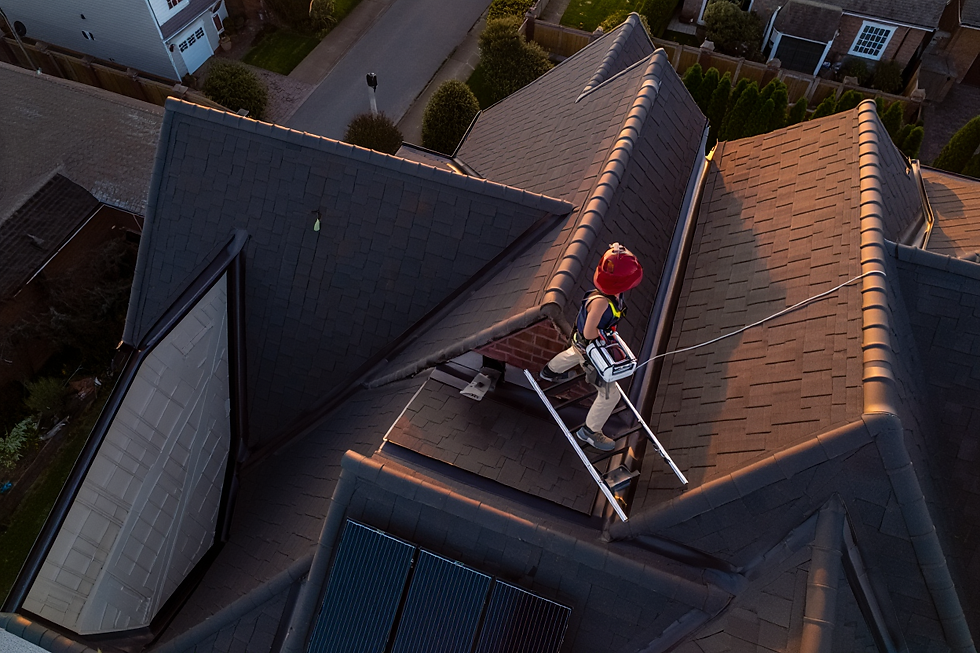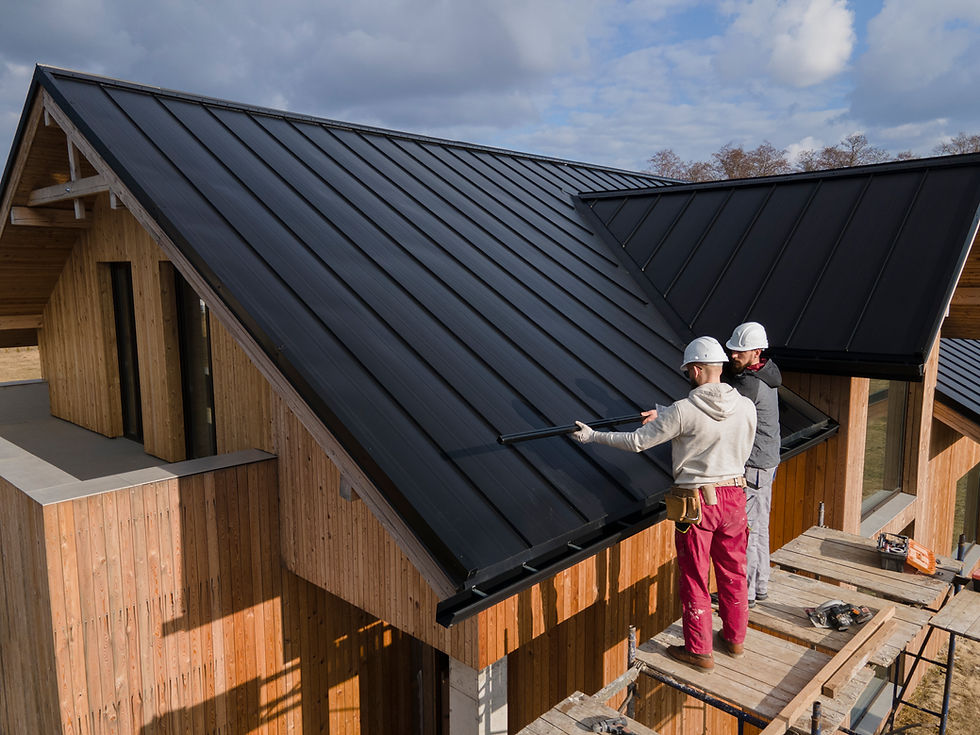The Ultimate Guide to Roof Inspections Before Buying a Home
- Adam Smith
- Sep 10
- 5 min read
Buying a home is one of the most significant investments you will ever make. While many homebuyers focus on interior designs, layouts, and neighbourhoods, the roof is often overlooked. A well-maintained roof protects your property from the elements and ensures the structural integrity of your home. Conversely, neglecting roof inspections can lead to costly repairs down the line. This ultimate guide will walk you through everything you need to know about roof inspections before purchasing a property.

Why Roof Inspections Are Crucial
A roof serves as the first line of defence against rain, snow, wind, and extreme temperatures. Any damage or deterioration can compromise your home's safety and cause significant financial burdens. Roof inspections allow you to identify potential problems before they escalate. Additionally, lenders and insurers often require a thorough roof check to ensure the property’s overall value and longevity.
By having a professional roofing company assess the roof, you can make an informed decision and negotiate repairs or pricing if necessary. Inspections provide clarity about the roof's current condition, the materials used, and the estimated lifespan of the structure.
Common Roof Issues to Look Out For
Understanding common roof problems helps you identify what to look for during an inspection. Here are some key issues:
Damaged or Missing Shingles
Shingles protect the roof from water penetration. Missing or cracked shingles can lead to leaks and structural damage. Check for curling, buckling, or granule loss.
Leaks and Water Damage
Water stains on ceilings, walls, or attic spaces indicate roof leaks. Roof leaks often start small but can escalate into significant problems, including mould growth and timber decay.
Flatroofing Problems
Flat roofs may develop pooling water due to inadequate drainage. Regular inspections prevent damage to flat roofing and prolong its lifespan.
Leadwork Deterioration
Lead flashing around chimneys, skylights, or vents can deteriorate over time. Damaged leadwork allows water ingress, causing leaks and potential structural issues.
Gutters and Fascia’s Blockages
Blocked gutters and damaged fascia’s can cause water to overflow, damaging your roof and walls. Proper maintenance ensures effective water drainage and prevents rot.
Age of the Roof
Even if a roof looks intact, age can reduce its effectiveness. New roofs often last decades, but older ones may require extensive repairs or replacement.
Steps for a Thorough Roof Inspection
A proper roof inspection involves several steps, performed by professionals to ensure safety and accuracy. Here is a detailed breakdown:
1. Visual Inspection
Start with a visual check from the ground and nearby access points. Look for obvious damage like missing shingles, sagging areas, or moss growth. This step provides an initial understanding of the roof’s condition.
2. Attic and Interior Check
Inspect the attic for water stains, mould, or structural damage. Signs of leaks inside the home often indicate roof issues that are not visible externally.
3. Roof Surface Examination
A roofing company will safely climb onto the roof for a closer inspection. They assess shingle quality, flatroofing seals, and leadwork. This step ensures that no detail is overlooked.
4. Gutter and Fascia Inspection
Gutters and fascia’s are critical for water drainage. Inspecting these components helps identify blockages, cracks, or rust. Proper gutter function protects the home’s exterior and interior.
5. Identify Age and Lifespan
Understanding the roof's age allows you to anticipate future repairs or replacement needs. If the roof is nearing the end of its life, budgeting for a new roof is essential.
6. Documentation
Request a detailed inspection report with photographs. This document can be invaluable during price negotiations or insurance claims. It ensures you have a record of the roof’s condition before finalising the purchase.
Benefits of Hiring a Professional Roofing Company
While DIY inspections can provide some insights, professional roof inspections are far more thorough and reliable. Here’s why:
Expertise: Roofing companies understand different materials, including shingles, leadwork, and flat roofing.
Safety: Professionals are trained to inspect roofs safely, reducing the risk of accidents.
Comprehensive Reports: Detailed documentation highlights issues that may not be visible to the untrained eye.
Accurate Estimates: They can provide accurate repair or replacement costs, helping you budget effectively.
Engaging a reputable roofing company ensures you make an informed decision while avoiding hidden surprises after purchase.
How Roof Condition Affects Home Value
The condition of a roof directly impacts a home’s value. A well-maintained roof signals reliability and reduces future expenses. Conversely, a deteriorating roof can lower the property’s market value and deter potential buyers. Lenders may also require repairs before approving a mortgage. Therefore, roof inspections are essential for both safety and financial reasons.
Red Flags During Roof Inspections
Knowing what to watch for can help you identify problems before they become costly:
Uneven Rooflines: Sagging areas may indicate structural issues.
Moss or Algae Growth: Excessive growth retains moisture, leading to rot and decay.
Cracked or Rusty Leadwork: Damaged lead flashing can cause leaks.
Pooling Water on Flatroofing: Indicates poor drainage and potential leaks.
Detached Gutters or Fascia’s: Water overflow can damage the home’s structure.
Spotting these red flags early allows you to negotiate repairs or reassess your purchase decision.
Roof Repairs vs. Replacement
After inspection, you may face a choice between roof repairs and a full replacement:
Roof Repairs
Minor issues like cracked shingles, damaged leadwork, or gutter repairs can often be addressed without replacing the entire roof. Repairs are cost-effective and extend the roof's lifespan.
Roof Replacement
If the roof is old, severely damaged, or structurally compromised, a new roof may be necessary. Investing in a new roof ensures long-term protection and can increase property value. Roofing companies can advise whether repairs or replacement is the most practical solution.
Special Considerations for Different Roof Types
Different roof materials and styles require unique inspection methods:
Tiled Roofs: Check for broken, loose, or missing tiles. Ensure proper sealing around chimneys and vents.
Slate Roofs: Inspect for cracks, chipped edges, or loose slates. Slate roofs are durable but can be expensive to repair.
Flatroofing: Ensure proper drainage, check for leaks, and inspect the membrane for wear.
Leadwork: Look for corrosion or cracks around joints and edges. Lead flashing is essential for water-tight sealing.
Gutter and Fascia’s Maintenance
Gutters and fascia’s play a crucial role in a roof’s performance. During an inspection:
Check for blockages caused by leaves or debris.
Look for signs of rust, cracking, or detachment.
Ensure water flows freely away from the roof and foundation.
Maintaining gutters and fascia’s prevents water damage and reduces the risk of structural issues.
How to Choose the Right Roofing Company
Selecting the right roofing company is vital for a thorough inspection and reliable advice. Consider these factors:
Experience: Choose a company with proven expertise in all roof types.
Reputation: Read reviews and seek recommendations from previous clients.
Certifications: Ensure they hold relevant industry certifications and insurance.
Transparency: Look for detailed quotes and clear communication.
Aftercare: A good company offers advice on maintenance and warranty coverage.
Preventive Maintenance After Purchase
Even after a thorough inspection and repairs, ongoing maintenance is essential. Schedule regular roof checks every 12-18 months. Clean gutters, remove debris, and monitor for signs of wear. Preventive maintenance reduces repair costs and extends the lifespan of your roof, keeping your home safe and sound.
Conclusion
A roof inspection is a crucial step in the home-buying process. It identifies potential issues, informs your purchasing decision, and safeguards your investment. From damaged shingles to gutter and fascia’s problems, understanding a roof’s condition ensures peace of mind and financial protection. Hiring a professional roofing company guarantees a thorough evaluation and expert guidance on repairs or replacements. By taking the time to inspect and maintain your roof, you protect your home and enhance its long-term value.


Comments